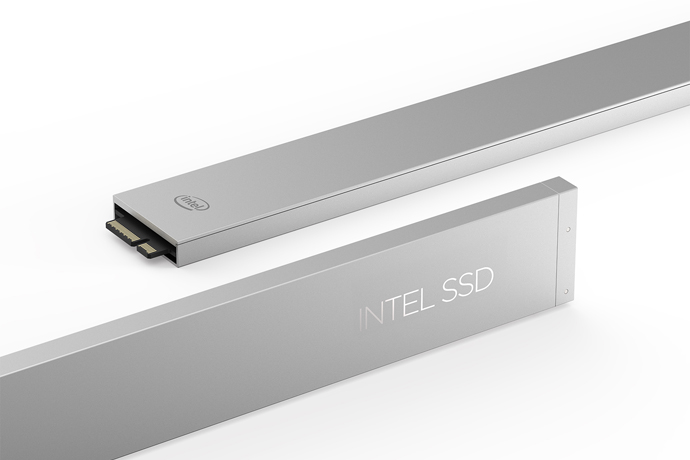As the market environment facing enterprise business development becomes more and more complex, more and more data is generated, and the requirements for the rate of data collection and processing are becoming higher and higher. In such a large environment, in-memory databases with huge advantages in data caching, fast algorithms, and parallel operations are being used in more and more business scenarios.
However, there are many storage companies in the market, such as HPE storages, Dell storages. How to reduce the comprehensive data holding cost? How to use data to let enterprises quickly grasp the development direction? How to accelerate the process of enterprise digital transformation is also a problem facing each enterprise. The company’s business upgrade and data increase require the purchase of a batch of data storage equipment. How should I choose? Perhaps we can find out from the following.
Here are two reasons for choosing storage: 1. How much Budget? 2. What do you want the storage to do?
- Budget
According to the current situation, most enterprises are very tight in purchasing funds, especially under this economic downturn, it is not bad to buy a storage budget of one hundred and two hundred thousand. Before you search the storage configurations, you should know your budget.

- What do you want the storage to do?
“What is the right storage suitable for us?”
Select storage which can support a large number of hard disks.
If a company has a large-scale computer room, it also has original storage equipment, more continuously generated data, and a strong upgrade demand. The first consideration should be distributed storage, specifically storage servers. This kind of equipment is the most common equipment in the data center at present, their characteristic is based on x86 framework, which can support a large number of hard disks. For example, a 2U storage server can mostly support 24 3.5-inch SATA disks, and the current maximum capacity of SATA disks can reach 16TB, so 384TB is quite impressive.
If you think 24 slots are too few? It does not matter, many manufacturers are racking their brains to increase the capacity of storage servers, there are many products with 24 disks and 48 disks.

Find the right SSD to make your storage speed faster.
But I need to remind you that in the current data era, “big” is not enough, but “fast” is also needed. In other words, even if you can store these data, you cannot rely solely on the SATA hard disk when retrieving these data. Your read and write speeds are limited by factors such as the transmission speed of the SATA interface and the physical speed of the mechanical hard disk itself. It will be very slow (even if you have a dual-head SATA hard drive now). Therefore, you also need to consider how you can digest and use these data as quickly as possible. At this time, you need the help of SSD.
The SSD we talk about every day is a broad concept, that is, all solid-state drives with fast read and write speeds are called SSDs. But if it is subdivided, it can also be divided into different levels according to indicators such as process and speed, and the application efficiency of different levels is also different.
Just like Intel. In the enterprise data center market, Intel has two major products: Optane and SSD. The latter is a solid-state disk in our traditional sense. The former has 3DXPoint technology, whether it is in performance, latency, or energy consumption. It is much better than SSD, which is several times that of SSD (the official theoretical number here is 1000 times, but it will be attenuated because of differences in actual environmental applications).
Similarly, even in the family of Optane, Intel has two major categories including Optane storage and Optane data center persistent memory, and Optane data center persistent memory also has two applications of App Direct mode and memory mode. form. Well, you only need to know that the performance of Optane storage is very strong, the power consumption is very low, and the application range is wide.

Flash disks make your storage more powerful.
Originally, storage equipment was expensive, had many configurations, and had a heavy burden of operation and maintenance. Due to the limited performance of mechanical hard drives, users can only continue to accumulate hard drives through RAID to obtain performance. The result of this is that if users need higher performance, they need to buy more hard drives.
In consideration of security factors, users often need to buy two or even four hard drives for a piece of data, and storage manufacturers’ hard drives are sold at an expensive price, which is 3-5 times the market price, like HPE hard drives. Can’t we go to the market and buy hard drives? No, because the manufacturer will add a hardware authentication module to the storage device. The hard disk purchased outside does not have this authentication module, and it cannot be recognized after the system is installed. Of course, this approach is still “guarantee the stability, reliability, security of customer data” and so on.
But the advent of flash memory changed all that. Originally we needed 100,000, 200,000, or even 500,000 low-end and mid-end storage devices to provide the performance, but now only one flash disk is enough, and even the performance is better than the original flash memory products. All of a sudden, the low-end products of the entire storage industry are completely scrapped, and most of the mid-range products are scrapped. Only high-end products can “barely fight” with stability.
Faced with this problem, many storage companies have also kept pace with the times, and have introduced some storage devices that use flash memory or even only flash memory (called all-flash memory). Of course, considering the price factor, although the performance of all-flash storage can be better than that of all current devices, the price is also particularly high.
Selecting Hybrid storage is the best way to save costs.
Then there is only one-way left-part of flash memory + part of mechanical hard disk, so-called hybrid storage. There are also many brands of this type of hybrid storage in production. Of course, considering the specific needs, in fact, it is no problem to DIY one set, just like we use SSD on our own computers. However, it is slightly different from the computer. After all, we are enterprise-level products that are used in the data center, so the specifications are higher.
Such as this:

This thing is called the Ruler. It does look like a ruler. This is the special form of product that Intel has introduced for the data center. Because of its size, it can be installed in a 1U high server. At the same time, it has a maximum capacity of 8TB (P4500 series) that can also solve customers’ data acceleration problems in daily use.
Of course, Intel also has ordinary SATA interface 2.5-inch and PCIe interface Optane series products, and even includes memory-shaped data center persistent memory. Of course, as an enterprise-level product, even the SATA interface SSD is stable and reliable It is also better than desktop products and as the QLC architecture platform promoted by Intel, their cost performance is also very good. Of course, when it comes to recognition, when it comes to enterprise-level applications, the Ruler is better.
Obviously, hybrid storage is currently the main storage form and also meets the needs of applications. On the one hand, enough mechanical hard disk space can bring greater storage advantages to the enterprise, which can meet the needs of upgrading; in addition, when fast data reading and writing is needed, the advantages of flash memory are reflected, whether it is Optane or ordinary SSDs can surpass the speed of mechanical hard drives, and make the data processing time as short as possible.
Summary
Therefore, I suggest that enterprises can consider the form of hybrid storage when computing is sufficient, and distributed storage based on x86 architecture is the most suitable.
Want to order storages? Visit our shop now: HPE storages, Dell storages.
If you have other tips of selecting storages, welcome to leave your idea.
Related Topics:
A Guide for Storage Newbies: RAID Levels Explained
DDR5 is Coming, Providing Twice the Bandwidth of DDR4
Buyer Guide: 5 Tips When Choosing IP Phones
Buyer Guide: 4 Misunderstandings when choosing an Access Point
Buyer Guide: How to Select Access Layer Switches for Enterprise?
Buyer Guide: 5 Don’ts of Selecting Enterprise Firewalls





